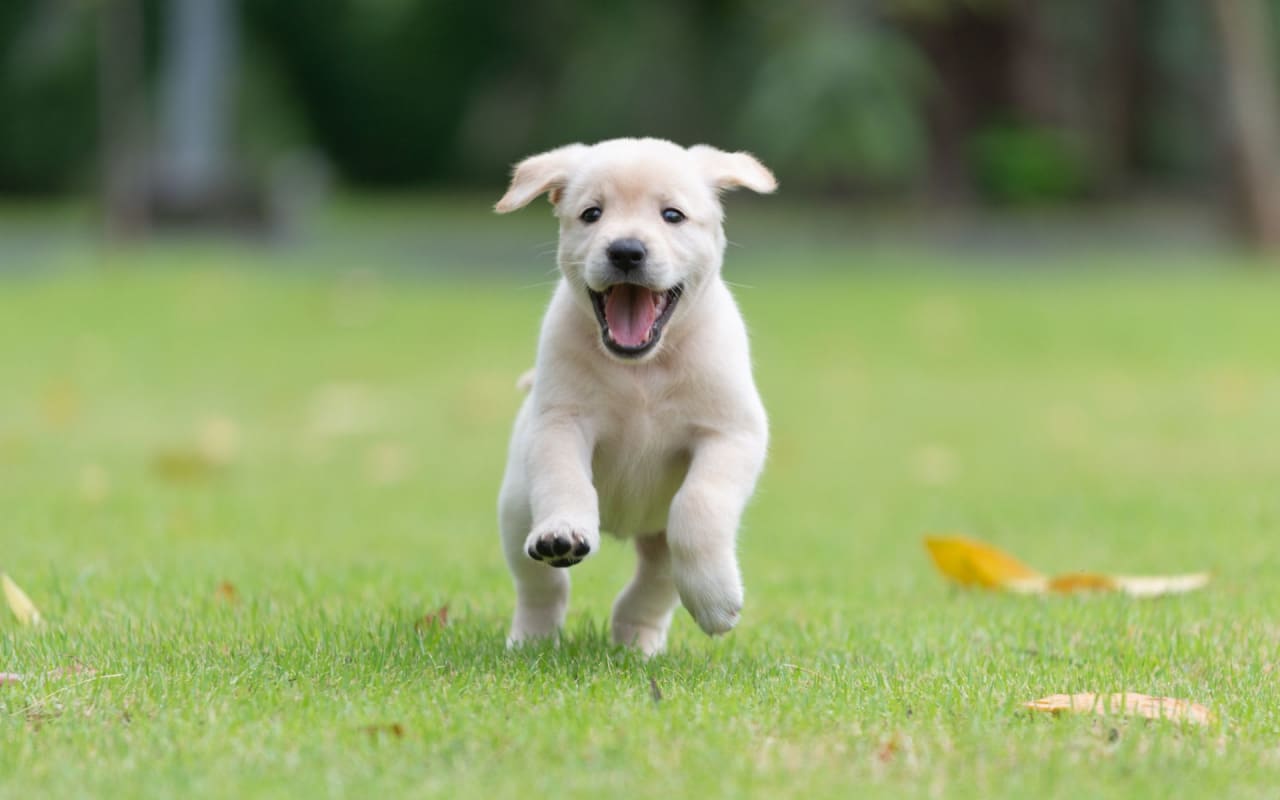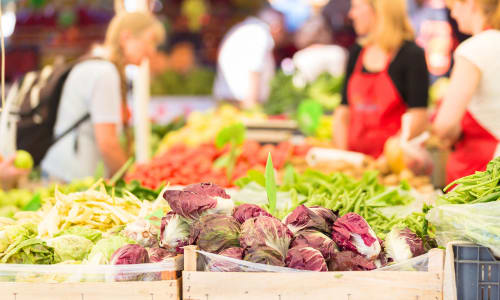Are you a victim of puppy love? You’re not alone! Puppies are adorable and bring out our playfulness. They keep us active and can grow to be loyal friends. But along with the joys of adopting a puppy comes with the inevitable wear and tear on your home, and – even more importantly – a great responsibility to keep these babies safe. Here are 20 ways to puppy-proof your home for their safety and your sanity.
Safety First – Protecting Your Pup From Your Home
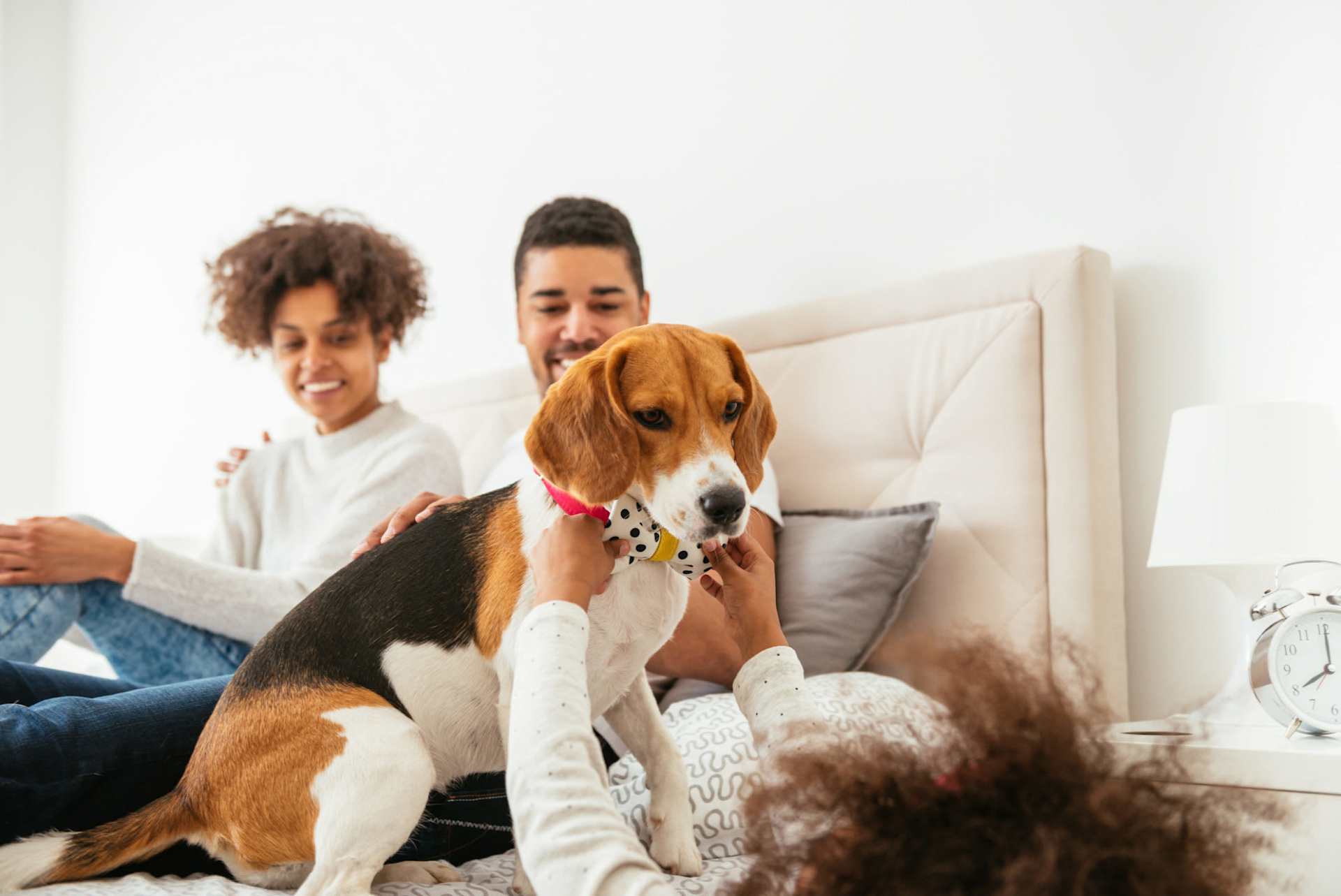
Happy african american family playing with their dog.
- Choose your veterinarian before you even bring your puppy home. Keep your regular vet and emergency vet’s contact information in an obvious place. Make sure your entire family and any pet sitters know where this list is.
- Look at your house from your puppy’s perspective, literally, and figuratively. Your curious, inquisitive new friend sees things differently than you do. Get down on your hands and knees in every room to see what might attract them. Think like a puppy during this exercise!
Indoors
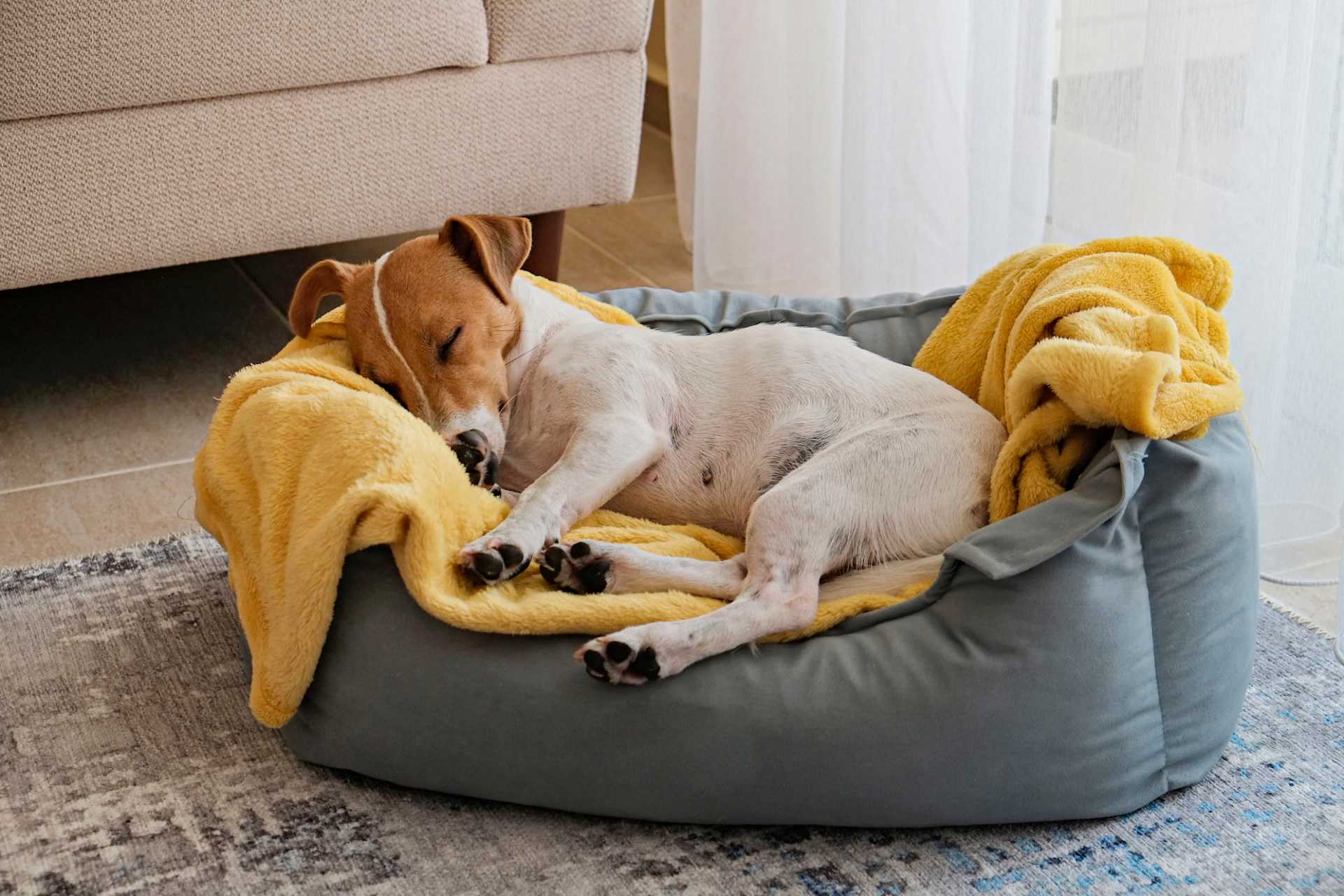
- Create a safe space for your pup. Crate training can give them a confined place to relax and retreat from overstimulation. Just like human babies, your canine baby needs to sleep!
- Young puppies should be supervised when not in a crate. If you have to leave your puppy alone, make sure they have a secured space that contains appropriate toys, a little water, a comfortable area for resting, and a potty area.
- Consider installing childproof locks and pet monitor cameras. Remember, your puppy is truly a baby/toddler.
- Install baby gates for rooms that you just don’t want your puppy to have access to.
- Keep trash secure and out of the way. The enticing smells wafting from your garbage are a puppy magnet. Your puppy could cause a disgusting mess by tearing your trash apart, and worse – they could ingest hazardous materials.
- Keep them away from filled bathtubs which can be a drowning hazard until your puppy has learned to swim. Even toilets can be dangerous. Keep toilet lids down.
- Hide things that you don’t want sharp puppy teeth to chew: cords, medicines, houseplants, chemicals, pest poisons, batteries, trash, detergent pods – even sugarless gum and chocolate can cause injury, illness, or death for your dog.
Here’s a partial list of the most common foods that can make dogs sick (vomiting, diarrhea, seizures) and in some cases can be fatally toxic:
- Alcohol
- Apricots, Balsam pears and Japanese plums
- Avocados
- Bacon
- Chocolate
- Coffee and tea
- Cooked bones
- Foods high in fat, sugar, or salt
- Grapes and Raisins
- Human vitamin supplements containing iron
- Milk and dairy
- Moldy food and yeast dough
- Nuts – almonds and macadamia
- Onions
- Raw eggs and fish
- Rhubarb and spinach
- Tobacco products are also toxic, including gum and nicotine patches.
- Tomato and potato leaves and stems
- Certain houseplants are also toxic. Here’s a partial list of common houseplants that can sicken or kill your puppy:
- Azalea
- Calla Lily (also Peace and Palm lilies)
- Asparagus (a.k.a. Emerald Feather, Lace Fern, Sprengeri Fern, Plumosa Fern)
- Elephant Ear
- Aloe Vera
- Ivy
- Sowbread (Cyclamen)
- Dieffenbachia (sometimes known as Dumb Cane)
- Jade (also called Rubber Plant and Friendship Tree)
- Poinsettia
- Philodendron
Outdoors
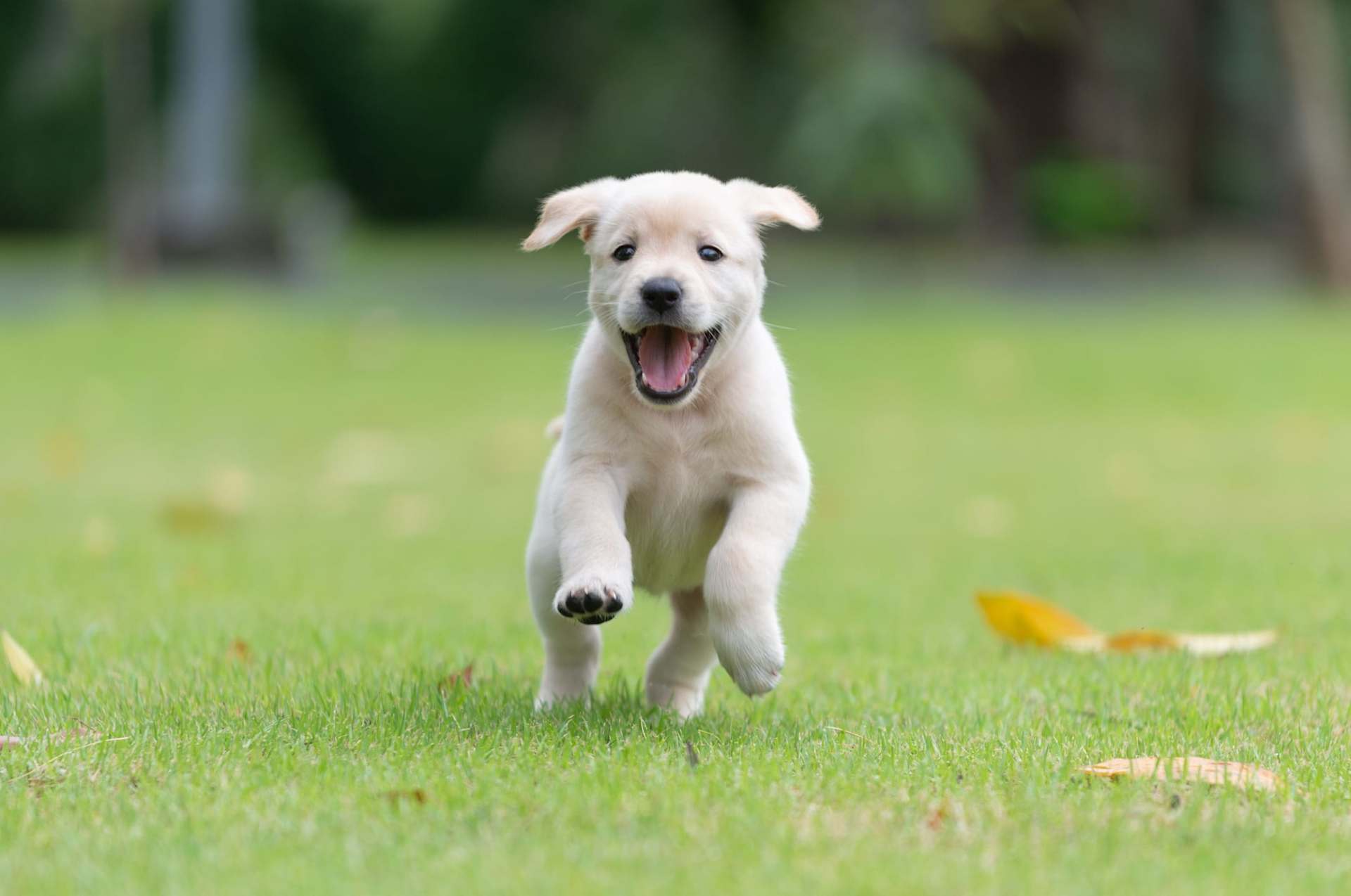
Happy puppy dog running on playground green yard
- Never allow your puppy to be outside unsupervised.
- Inspect your flora and fauna and research what might be poisonous for puppies. Some common culprits include:
- Aconite
- Belladonna
- Buttercups
- Chrysanthemum
- Creeping Charlie
- Daffodils
- Delphinium
- Elderberry
- Foxglove
- Gardenias
- Hibiscus
- Hyacinth
- Hydrangea
- Lily of the Valley
- Marigolds
- Oak
- Oleander
- Peonies
- Philodendron
- Poison ivy
- Poison oak
- Primroses
- Rhododendron/Azaleas
- Rhubarb
- Sago Palm
- Stinging nettle
- Tomato
- Tulips
- White clover
- Wisteria
- Yew
- Make sure pools are fenced in. Even baby pools and uncovered jacuzzis are hazardous.
- Mow and maintain your yard. Tics are more likely to live in tall grass. Remember, if maintaining your yard means using fertilizers and pesticides, this could be unhealthy – especially after a recent treatment.
- Watch out for temperature extremes – cold or hot – and weather events.
- Be on the lookout for animal predators.
Harmonious Living – Protecting Your Home From Your Pup
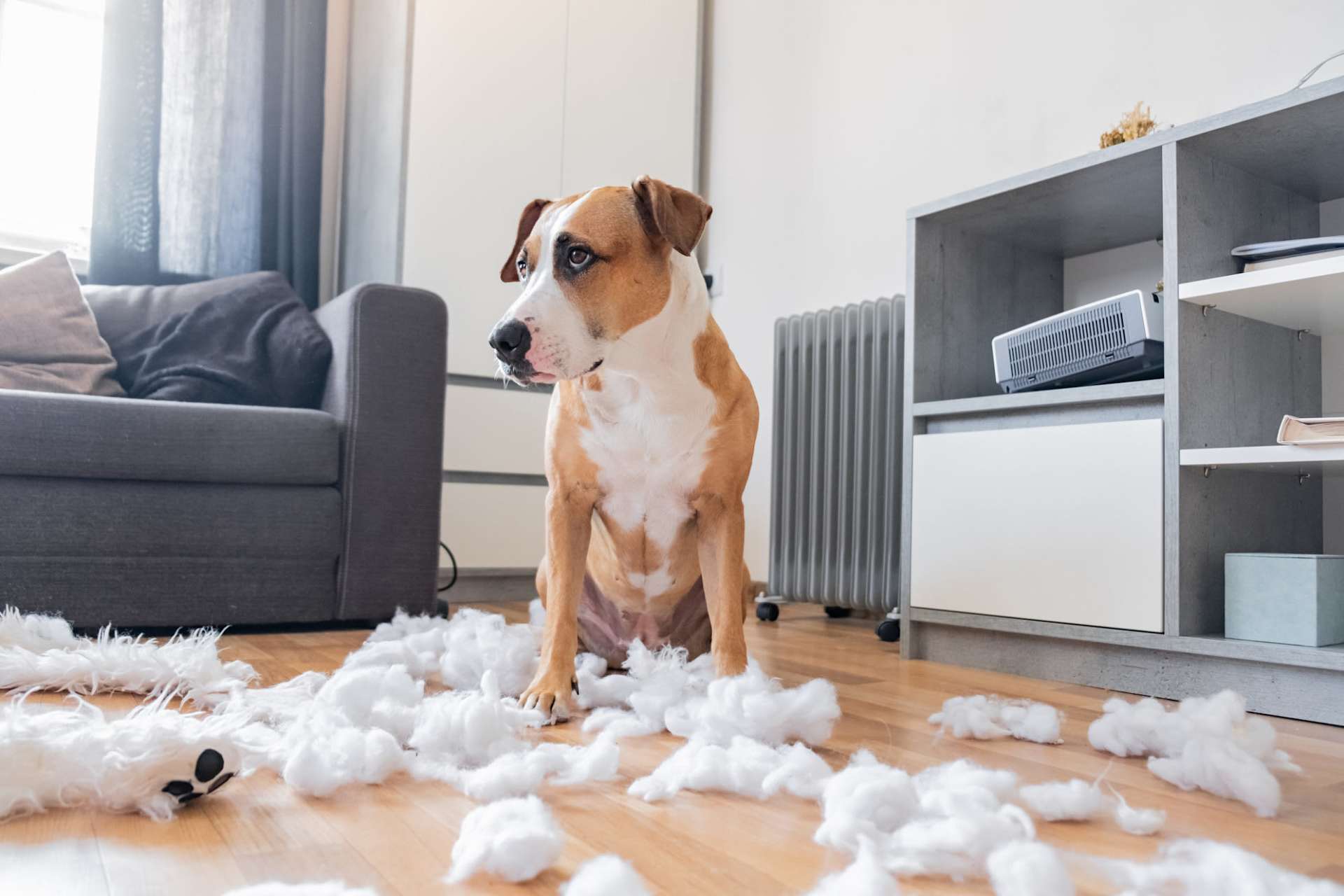
Protecting your little canine guy or gal is paramount, but protecting your house from your puppy will create a more harmonious living environment. You don’t want to be constantly yelling at your dog – and they sure don’t want that either! Here are some ways to create a more durable home environment:
- Install pet-friendly finishes and fabrics
Floors:
- Ceramic or porcelain tile are scratch-resistant and nonporous (think puppy potty-training accidents), but make sure to apply a sealer twice a year to the grout – which can be more absorbent.
- If you like wood, factory-finished floors weather better than true hardwood. Luxury vinyl planks are even hardier.
- If you have wall-to-wall carpeting, buy some synthetic fabric rugs to use over these, at least during the potty training phase. Indoor-outdoor rugs are great because they are designed to be stain and odor proof. Low-pile wool rugs are also fairly wear-proof since they are naturally water-resistant and should be relatively easy to spot-clean.
Upholstery:
- Fabric upholstery can be protected with a layer of Scotchgard, but adding a washable slipcover is your best bet. Removable cushions that can be routinely thrown in the wash are a good option, or simply drape a pet blanket over your couches and chairs.
- Ultrasuede (a synthetic form of suede) is designed to be stain resistant and moderately resistant to scratch marks. Follow the manufacturer’s instructions for cleaning.
- Leather doesn’t tend to absorb pet smells and is easy to clean, but can scratch easily. You might want to consider a distressed leather so that the wear from puppy claws won’t be as noticeable.
Feeding Area
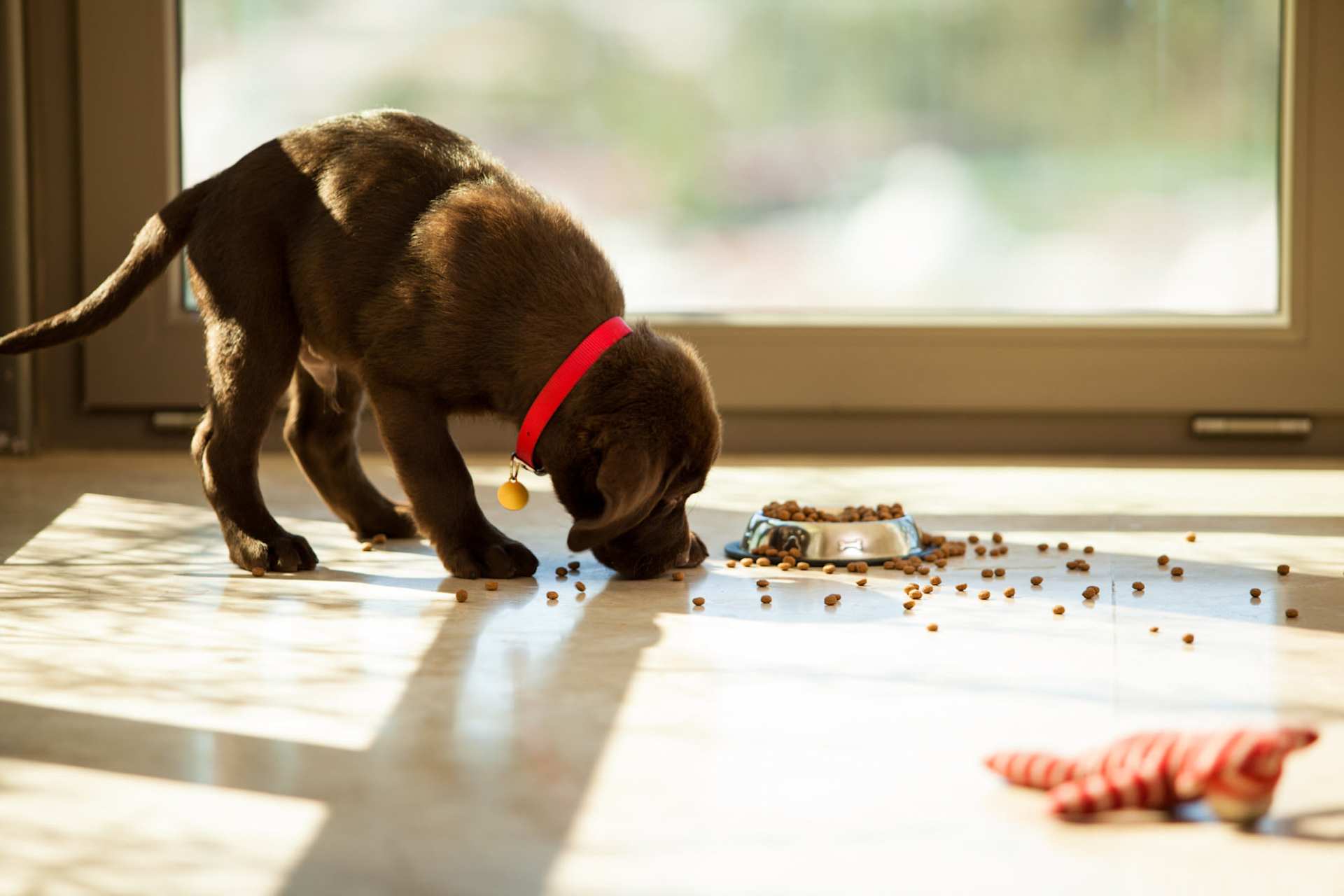
Beautiful brown Labrador eating food from its plate in the living room
- Create a specific area for pet bowls. A built-in area will not only keep the room tidier, but it will prevent you from tripping over bowls and spilling food and water everywhere.
- Revisit this list and re-evaluate your home periodically – even when your puppy becomes an adult dog!
